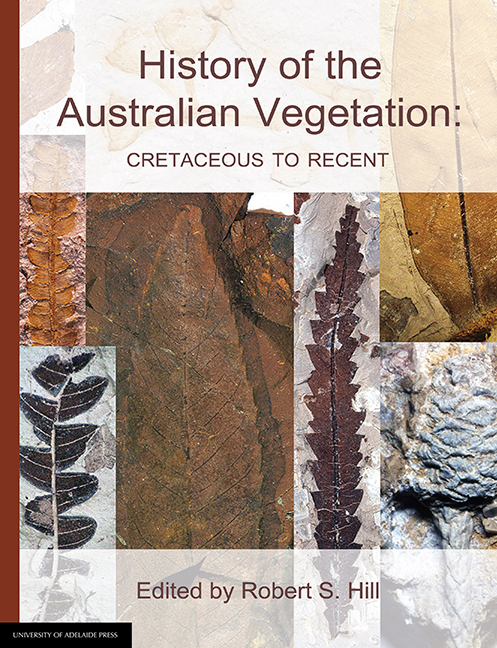Book contents
- Frontmatter
- Contents
- List of contributors
- Introduction to the 2017 edition
- 1 The Australian fossil plant record: an introduction
- 2 Maps of late Mesozoic-Cenozoic Gondwana break-up: some palaeogeographical implications
- 3 The background: 144 million years of Australian palaeoclimate and palaeogeography
- 4 Palaeobotanical evidence for Tertiary climates
- 5 Landscapes of Australia: their nature and evolution
- 6 Patterns in the history of Australia's mammals and inferences about palaeohabitats
- 7 Australian Tertiary phytogeography: evidence from palynology
- 8 Cretaceous vegetation: the microfossil record
- 9 Cretaceous vegetation: the macrofossil record
- 10 Early Tertiary vegetation: evidence from spores and pollen
- 11 The early Tertiary macrofloras of continental Australia
- 12 Cenozoic vegetation in Tasmania: macrofossil evidence
- 13 The Neogene: a period of transition
- 14 The Oligo-Miocene coal floras of southeastern Australia
- 15 Quaternary vegetation
- 16 The history of selected Australian taxa
- Taxonomic index
- General index
Introduction to the 2017 edition
Published online by Cambridge University Press: 25 July 2017
- Frontmatter
- Contents
- List of contributors
- Introduction to the 2017 edition
- 1 The Australian fossil plant record: an introduction
- 2 Maps of late Mesozoic-Cenozoic Gondwana break-up: some palaeogeographical implications
- 3 The background: 144 million years of Australian palaeoclimate and palaeogeography
- 4 Palaeobotanical evidence for Tertiary climates
- 5 Landscapes of Australia: their nature and evolution
- 6 Patterns in the history of Australia's mammals and inferences about palaeohabitats
- 7 Australian Tertiary phytogeography: evidence from palynology
- 8 Cretaceous vegetation: the microfossil record
- 9 Cretaceous vegetation: the macrofossil record
- 10 Early Tertiary vegetation: evidence from spores and pollen
- 11 The early Tertiary macrofloras of continental Australia
- 12 Cenozoic vegetation in Tasmania: macrofossil evidence
- 13 The Neogene: a period of transition
- 14 The Oligo-Miocene coal floras of southeastern Australia
- 15 Quaternary vegetation
- 16 The history of selected Australian taxa
- Taxonomic index
- General index
Summary
During the early 1990s I agreed to edit a book on the Cretaceous and Tertiary fossil plant record of Australia. A huge amount of information was available to be synthesised into a single volume, and I was fortunate to have an excellent group of people to draw on to produce a comprehensive set of chapters. Much of what they wrote has stood the test of time, and hence this reprint of that book should be a very welcome addition for anyone with an interest in the Australian fossil record. However, there have been some great advances in the last 25 years and it is important to recognise the contribution that has been made during that time to our understanding of the overall picture of the evolution of the living Australian vegetation. The best way to do this and to keep it up to date is via a website that provides details of important advances in this area over the last quarter of a century. The details of that website will be made available soon, and I invite everyone to submit relevant publications to that site.
It is an exciting time to be a palaeobotanist and the Australian fossil record promises much that is new and innovative for the future. I believe this reprint provides a very solid base that will stand for many years to come as the basis on which our reconstruction of past events can be made. The fossil record provides a vast and precious resource that demonstrates the history of life, and its relevance to our present and future well-being becomes more apparent as new approaches to using the fossil record as important tests of contemporary issues of great significance, like adaptation to climate change and determining the best approaches to fire management.
Studying the fossil record holds a strong appeal for young people and I hope this book and the associated web-based resources will attract more people to the plant fossil record of Australia, which stands as one of the great natural experiments in plant evolution.
- Type
- Chapter
- Information
- History of the Australian VegetationCretaceous to Recent, pp. ix - xPublisher: The University of Adelaide PressPrint publication year: 2017



